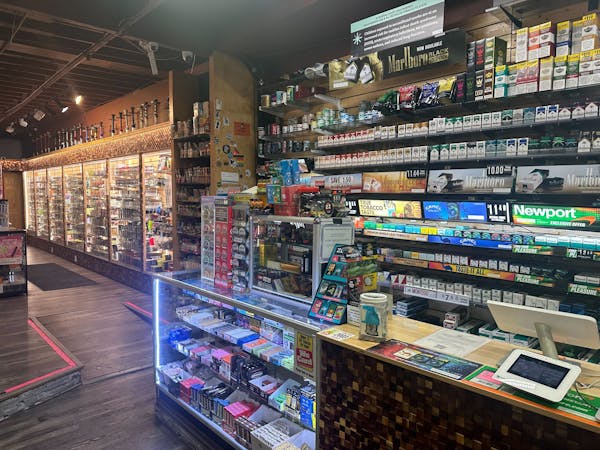City leaders in Minneapolis lent their political muscle Friday to help thwart birds from crashing into the planned glassy exterior of the new downtown Vikings stadium.
Fueled by aviary advocates who have warned of mass bird deaths, the City Council passed a resolution calling for the use of special glass at the facility, which is in early stages of construction. The measure was effectively symbolic as the body overseeing stadium construction said Friday it has no plans to spend more money for the special glass.
"I believe this is a way to show the seriousness of the environmental issue at hand," Council Member Linea Palmisano said before the unanimous voice vote. "It shows support for an important part of our ecosystem."
The resolution states that the city's interests should be honored in the design, as it is contributing $150 million in local sales tax revenue to stadium construction.
So-called "fritted" glass the council seeks contains tiny ceramic beads that dramatically reduce bird deaths by breaking up the reflection and reducing transparency, said Audubon Minnesota Executive Director Matthew Anderson. It was recently used on the Jacob Javits Center in New York City for that purpose.
The group estimates that using it for the nearly 200,000 square feet of glass would add $1.1 million to the cost of the nearly $1 billion Vikings project.
"You can see the dots when you're right up close, but for most of us … because our eyes work differently than birds', it does not really hinder the experience," Anderson said. The council supports fritted glass — vs. glazed or etched glass — because it is manufactured by the same company already supplying glass for the facility: Owatonna-based Viracon.
A Viracon spokesman declined to comment Friday afternoon.
"One of the design goals was to create a building that was more connected and integrated with the community than the Metrodome had been," Michele Kelm-Helgen, chairwoman of the Minnesota Sports Facilities Authority, said in a statement. "The ability to see in and out of the stadium was what led us to the design that included the [specialty plastic] roof and operable doors on the downtown-facing wall."
The authority also previously agreed to turn the lights out at night in the facility, which should help prevent it from luring migratory birds to its windows.
Manufacturing of the glass is expected to begin soon and last about five months, said authority spokeswoman Jennifer Hathaway. It will be delivered starting in January.
The council's resolution notes that the city's stadium implementation committee recommended in July 2013 that the structure comply with Audubon Minnesota guidelines. But Hathaway said the authority approved the design before those recommendations.
Council President Barb Johnson said that Friday's resolution will be sent to the authority, where city appointees occupy two seats on the five-person body.
"We're going to communicate with our representatives on the sports facilities authority," Johnson said, adding that no city money — beyond what has been allocated for the stadium — will contribute to the effort.
Asked whether the city's representatives could propose changing the design, Hathaway said in an e-mail, "The design was approved by the MSFA board on May 13, 2013."
Audubon Minnesota nonetheless applauded the council's move. "We applaud the Minneapolis City Council for recognizing that Minnesotans deserve the best of both worlds; a top flight, world-class sports facility that is also on the leading edge of bird-safety," Anderson said in a statement.
To help take stock of birds that die from building collisions, the society walks the streets of downtown Minneapolis early in the morning during biannual monitoring periods. In more than seven years, they have discovered 6,000 dead birds of about 130 species. Joanna Eckles, Audubon Minnesota's Bird Friendly Communities manager, said the vast majority of the birds are migratory songbirds, particularly warblers.
Eric Roper • 612-673-1732
Twitter: @StribRoper

Cigarettes at $15 per pack? Minneapolis might do it.
![St. Louis County Board approved a plan to distribute $24 million in CARES funding, including $6 million to be distributed to small businesses. ] ALEX](https://arc.stimg.co/startribunemedia/ED62G7Y2RWISNRUZQRT3ZTJVHU.jpg?h=91&w=145&fit=crop&bg=999&crop=faces)
Duluth man sentenced to 40 years for role in drive-by shooting that killed 19-year-old

